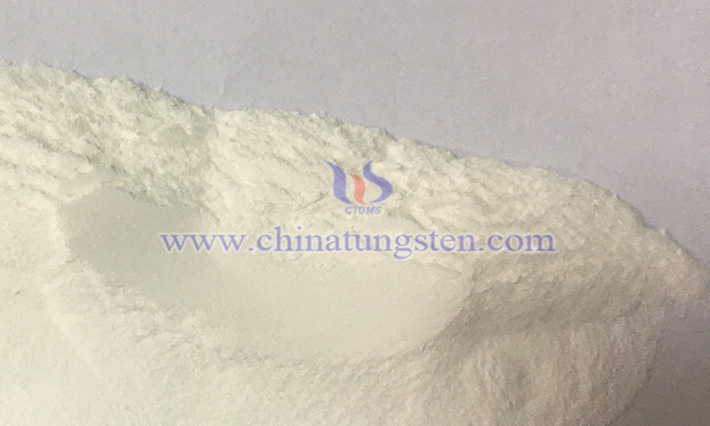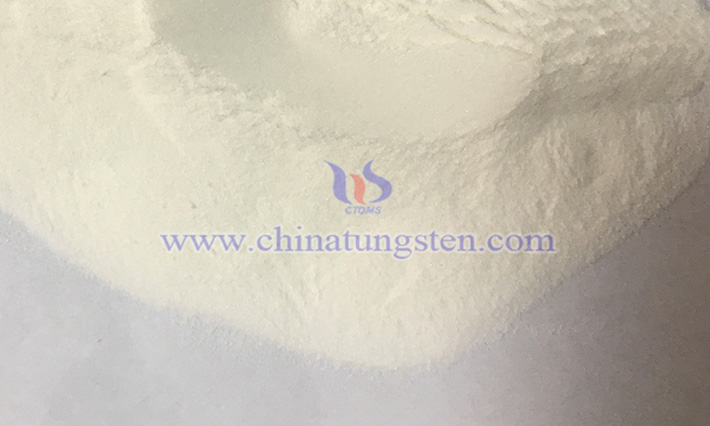Neutralization Method for Producing Ammonium Metatungstate
- Details
- Category: Tungsten Information
- Published on Friday, 25 April 2025 16:38
Ammonium metatungstate (AMT), a crucial tungsten compound, is widely used in catalysis, petrochemicals, and new materials. The neutralization method, due to its simplicity and ease of operation, is one of the classic industrial methods for producing AMT.
Core Raw Materials and Requirements:
The key raw materials for the neutralization method are tungstic acid and ammonia water, and their quality directly impacts reaction efficiency and product quality. Tungstic acid purity typically needs to be above 98%, with low impurity content to ensure high-quality output. Particle size is also critical; industrially, tungstic acid is often ground to 200-300 mesh to increase its surface area for better reaction with ammonia water. Ammonia water concentration is generally maintained between 20%-28%.

Process Steps of the Neutralization Method:
Neutralization Reaction: Pre-treated tungstic acid is slowly added to a reactor while stirring, and ammonia water is introduced in a controlled ratio. The two undergo a neutralization reaction to form an ammonium tungstate solution. Key controls include maintaining the temperature at 50-70°C, monitoring the solution’s pH in real-time to ensure complete reaction, and ensuring uniform stirring to avoid localized concentration differences.
pH Adjustment and Polymerization: After obtaining the ammonium tungstate solution, an acid (e.g., nitric acid or hydrochloric acid) is added to adjust the pH to 2-4. At this pH range, tungstate ions polymerize into AMT. The acid must be added slowly, with uniform stirring, and the pH closely monitored using a high-precision pH meter.
Evaporation and Concentration: Post-polymerization, the solution is transferred to evaporation equipment and heated to remove excess water, increasing AMT concentration. Key parameters include a temperature of 80-100°C, a vacuum level of -0.08 to -0.06 MPa, and continuous stirring.
Cooling Crystallization: Once concentrated to the desired level, the solution is slowly cooled to allow AMT crystals to precipitate. Cooling speed affects crystal quality; typically, a gradient cooling approach is used—rapid cooling to a certain temperature, followed by slow cooling to room temperature—to obtain uniform crystal sizes.

Filtration and Washing: The crystals are separated from the mother liquor using a centrifuge or filter press. To remove surface impurities and residual mother liquor, the crystals are washed multiple times with deionized water. Washing must balance impurity removal with minimizing crystal dissolution, controlling the amount and duration of wash liquid.
Drying: The washed crystals are dried in a vacuum drying oven or hot air dryer at 80-120°C. Drying time varies based on equipment and crystal properties, continuing until the moisture content meets standards, yielding the final AMT product.
Key Considerations for Quality and Efficiency:
Raw Material Quality: Strictly test the purity and impurity content of tungstic acid and ammonia water, establishing quality records and inspecting each batch.
Reaction Conditions: Precisely control temperature, pH, and reaction time, regularly calibrating temperature sensors and pH meters for reliable data.
Process Monitoring: Periodically sample and analyze the solution and product for purity, impurity content, and particle size distribution, adjusting parameters as needed.
Equipment Maintenance: Keep reactors, evaporators, and filtration equipment clean to prevent contamination or equipment failures that could disrupt production.
Advantages of the Neutralization Method:
Simplicity: The process is straightforward, easy to operate, requires minimal equipment, and has low investment costs.
Raw Material Flexibility: Tungstic acid and ammonia water are widely available and cost-effective.
Product Versatility: By adjusting reaction conditions, AMT of varying specifications and purities can be produced to meet perse needs.
Disadvantages of the Neutralization Method:
Purity Limitations: Product purity is heavily influenced by raw materials and process control, making it challenging to produce ultra-high-purity AMT.
Environmental Pressure: The process generates wastewater and exhaust gases, requiring environmental facilities that increase costs.
Impurity Risks: Acids used for pH adjustment may introduce new impurities, necessitating further optimization of impurity removal processes.
| Molybdenum Supplier: Chinatungsten Online www.molybdenum.com.cn | Tel.: 86 592 5129595/5129696 Email:sales@chinatungsten.com |
| Tungsten News & Prices: Chinatungsten Online news.chinatungsten.com | Molybdenum News & Molybdenum Price: news.molybdenum.com.cn |



 sales@chinatungsten.com
sales@chinatungsten.com